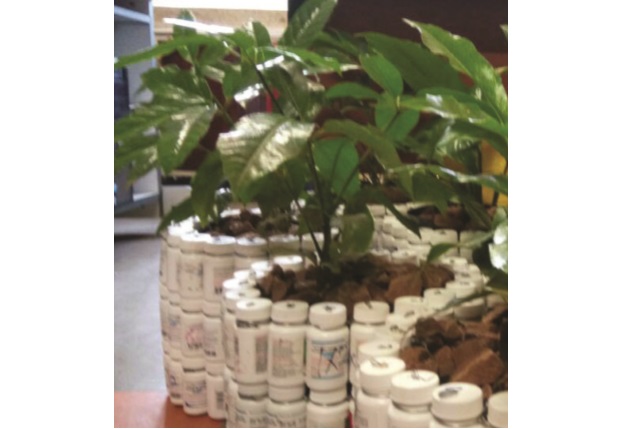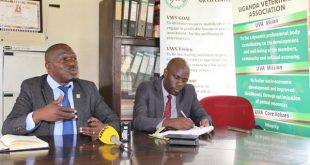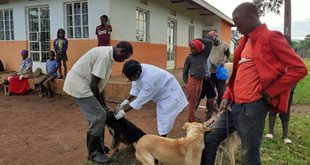
Unseen face of HIV/AIDS
Kemigisa and her clients are most times the unseen face of Uganda’s most troubling public health crisis; of young people becoming the leading cohort in acquiring HIV.
Uganda is one of the countries with the highest burden of HIV in the Sub-Saharan Africa, with an estimated 1.5 million of its more than 36 million people living with the virus. Since 77% of the population is youth – people aged between 12 and 30 years old – they inevitably comprise a large percentage of those infected. A Ministry of Health report released in 2016 showed 66% of all new infections happen among adolescents.
Figures from Uganda AIDS Commission show the rate of infection rising steeply from the age of 15 years when most youth engage in sex for the first time. Girls are more infected than boys. At 15 years, for example, about 1.5% of girls are HIV positive. However, just two years later – when the girls are 17 years old, the HIV prevalence in that segment swells to 5.1%. By the time girls reach 24 years of age, the HIV prevalence in their segment is 7%. The boys are equally hit by HIV, but at a slightly slower pace. Many of the boys start engaging in sexual activity much later at age 17. But by 15 years old, up to 1.8% of the boys are infected. By the time they are 24 years, the HIV prevalence in their segment is 3.6%. And worrying, many youths have their HIV progressed to AIDS by the time they learn of their infection — which means that they are very ill by the time they begin treatment which makes it hard for them to adhere. Many end up dying. But, thanks to advances in research into treatment, many can now live full productive lives and not spread the virus further since with adherence to drugs scientists say one’s chance of transmitting is very minimal – reduced by 96% if their viruses are suppressed. That’s why government recently adopted a World Health Organisation recommendation not to wait for one’s viral load to necessitate treatment but to start immediately even when one’s immune system is still stable. This, however, is easier decreed than done. Accessing these drugs is not easy and continuously taking them is another hurdle. Kemigisa says not knowing whether they will be able to get that next dose is a challenge that worries many people living with HIV. It worries the experts too.
Sande Amakobe, the UNAIDS Uganda Country Representative says for a Ugandan to access medicine, a person in Washington or Geneva has to sign a cheque. “It’s a big risk,” she says, “to ask somebody else to take care of 90% of our problem.” she is referring to how Uganda contributes only 10% of money required for HIV treatment.
But HIV activists are pushing for a local AIDS Fund of about US$2 million every year. This money, they say, could be kept as a sort of emergency relief fund to cover stock outs. Everything is still on paper and there is no real effort to ensure that more drugs are availed sustainably. This puts questions on whether the government is committed to fighting HIV/AIDS.
Targeting the youth
Evelyn Chemutai, the Woman MP for Bukwo District sits on the Parliamentary Committee on HIV and Related Diseases. She says youth shun testing until it is too late for many reasons. But the main one, in her view, is fear of stigma. She says, for example, youth are not comfortable seeking treatment in the same place as adults and advocates for the so-called “youth friendly corners”. According to her, the recently launched oral self-testing Kit for HIV could work best for this group.
“Healthcare managers need to come up with ways that ensure young people get involved in their own care,” she says.
Chemutai says the Ministry of Health also needs to design youth appropriate messages that not only attract the youth but tackle the stigma and the how and where to get the treatment.
Godfrey Walakira, the Training and Development Manager at Straight Talk Foundation Uganda, agrees. For Walakira, there has not been comprehensive sexuality education both at school and home level.
“Parents rarely talk to their children about sex yet the reality is that they are sexually active. It means they are doing it without appropriate guidance,” he says.
He backs the findings of the 2015 Situation Analysis of Children in Uganda by UNICEF which found adolescent girls are more infected because they face multiple vulnerabilities as a result of disempowerment both at individual, family and community level.
“Most of the time, they don’t choose when to have sex or whether or not to use condoms,” says Walakira.
He said even those who are already living with HIV, like other adolescents, must deal with developing sexuality but they are not supported. They face challenges of disclosure, adherence to drugs and how to prevent transmitting HIV to their sexual partners.
Kemigisa can relate to what Walakira is talking about. She knows too well how hard it is to reveal one’s HIV positive status and the dilemma of not knowing how the news will be received.
“No one will want to marry or associate with you. They judge you; see you as a spoilt brat,” she says. She says when she discovered she was positive, she didn’t know how exactly to carry on. She became sickly. She was too depressed and ashamed to tell anyone about it.
Kemigisa has now shared her story countless times and her goal, she says, is to help fellow youths understand that she has been there too and has learnt to defeat it. On July 03, her husband and son went for another test which came out negative again. Immediately she took to her Facebook account and posted, “My ARVs, my son and husband’s insurance” to restore hope in any HIV positive person who comes across her post.
Kemigisa says her eight year old HIV positive daughter might have been negative had she been empowered then and had access to medication and good feeding. She wants to ensure no youth suffer the same fate tomorrow.For her, being HIV positive and being on ARVs should not be treated as a secret if more people are to seek treatment.
“Young people need someone they can believe in and who believes in them,” she said adding “I told God I want to be able to help people like me because I know they will need someone to listen to them. I never got that chance but these days I get people who tell me, `Barbara you helped me, can you help her too?”

****
 The Independent Uganda: You get the Truth we Pay the Price
The Independent Uganda: You get the Truth we Pay the Price


